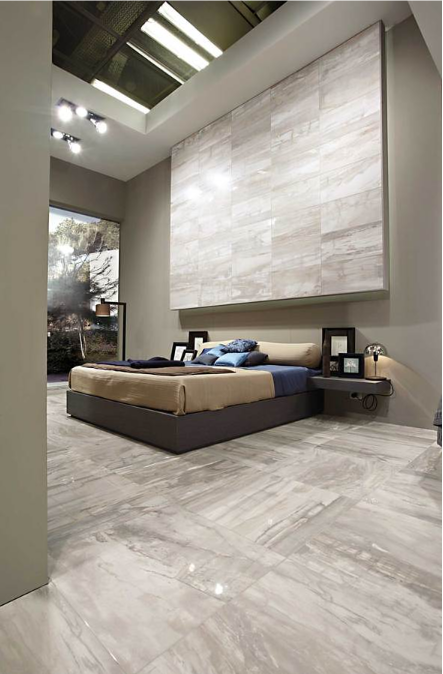Choosing the right floor tiles can dramatically enhance your home’s aesthetic, functionality, and value. With countless options available—from ceramic and porcelain to natural stone and luxury vinyl—selecting the best flooring requires careful consideration of durability, style, and budget.
This comprehensive guide will walk you through everything you need to know before buying floor tiles, ensuring you make an informed decision for your space.
1. Understand the Different Types of Floor Tiles
Ceramic Tiles
- Pros: Affordable, water-resistant, easy to clean, and available in endless designs.
- Cons: Less durable than porcelain, can chip under heavy impact.
- Best for: Low-to-medium traffic areas like bathrooms, kitchens, and living rooms.
Porcelain Tiles
- Pros: Extremely durable, scratch-resistant, moisture-proof, and ideal for high-traffic zones.
- Cons: More expensive than ceramic and harder to cut during installation.
- Best for: Entryways, kitchens, outdoor patios, and commercial spaces.
Natural Stone (Marble, Granite, Slate, Travertine)
- Pros: Luxurious, unique patterns, and long-lasting.
- Cons: Requires sealing, can be slippery, and is high-maintenance.
- Best for: Upscale interiors, feature floors, and areas where elegance is a priority.
Vinyl & Luxury Vinyl Tiles (LVT)
- Pros: Budget-friendly, waterproof, soft underfoot, and easy to install.
- Cons: Not as durable as porcelain, can fade over time.
- Best for: Basements, laundry rooms, and homes with kids/pets.
Cement & Terrazzo Tiles
- Pros: Industrial-chic look, highly durable, and customizable.
- Cons: Needs sealing, can be cold underfoot.
- Best for: Modern, minimalist, or Mediterranean-style homes.
2. Consider Tile Size & Layout
- Large Tiles (24×24” or bigger) → Create a seamless, modern look with fewer grout lines. Best for open spaces.
- Medium Tiles (12×12” to 18×18”) → Classic choice, works well in most rooms.
- Small Tiles (Mosaic, hexagon, subway) → Great for adding texture and interest in bathrooms or entryways.
Pro Tip: Larger tiles make small rooms appear more spacious, while patterned tiles add character.
3. Prioritize Durability & Slip Resistance
- PEI Rating (Porcelain Enamel Institute):
- PEI 1-2 → Light residential use (walls only).
- PEI 3 → Moderate foot traffic (living rooms, bedrooms).
- PEI 4-5 → Heavy traffic (kitchens, hallways, commercial spaces).
- Slip Resistance:
- Matte, textured, or honed finishes provide better grip.
- Avoid glossy tiles in wet areas like bathrooms and entryways.
4. Choose the Right Color & Finish
- Light Colors (White, Beige, Gray) → Make rooms feel larger and brighter.
- Dark Colors (Charcoal, Black, Navy) → Add drama and hide dirt better.
- Wood-Look & Stone-Look Tiles → Offer the beauty of natural materials with added durability.
- Glossy vs. Matte Finish:
- Glossy reflects light but shows scratches and watermarks.
- Matte hides imperfections and provides better traction.
Pro Tip: Neutral colors offer long-term versatility, while bold patterns make a statement.
5. Factor in Maintenance & Upkeep
- Low-Maintenance Options: Porcelain, ceramic, and vinyl tiles (easy to clean).
- High-Maintenance Options: Natural stone (needs sealing), cement (can stain).
6. Set a Realistic Budget
- Budget-Friendly ($2-$5/sq. ft): Ceramic, vinyl, and some porcelain tiles.
- Mid-Range ($5-$10/sq. ft): Large-format porcelain, wood-look tiles.
- High-End ($10-$20+/sq. ft): Natural stone, handmade cement tiles.
Pro Tip: Invest in high-quality tiles for high-traffic areas and save on decorative accents.
7. Where to Buy Floor Tiles
- Home Improvement Stores (Home Depot, Lowe’s) → Wide selection, affordable prices.
- Tile Specialty Stores → Higher-end options, expert advice.
- Online Retailers (Wayfair, TileBar, Emser Tile) → Convenient, but always order samples first.
Pro Tip: Purchase 10-15% extra tiles to account for cuts, breaks, and future repairs.
Conclusion: Find the Perfect Floor Tiles for Your Home
Floor tiles are a long-term investment that impacts both the look and functionality of your home. Whether you prioritize durability (porcelain), luxury (marble), or affordability (ceramic/vinyl), the right choice depends on your lifestyle, design preferences, and budget.
Before making a final decision, order samples to see how tiles look in your space under different lighting conditions. With the right selection, your new floor will be beautiful, practical, and built to last for years.




